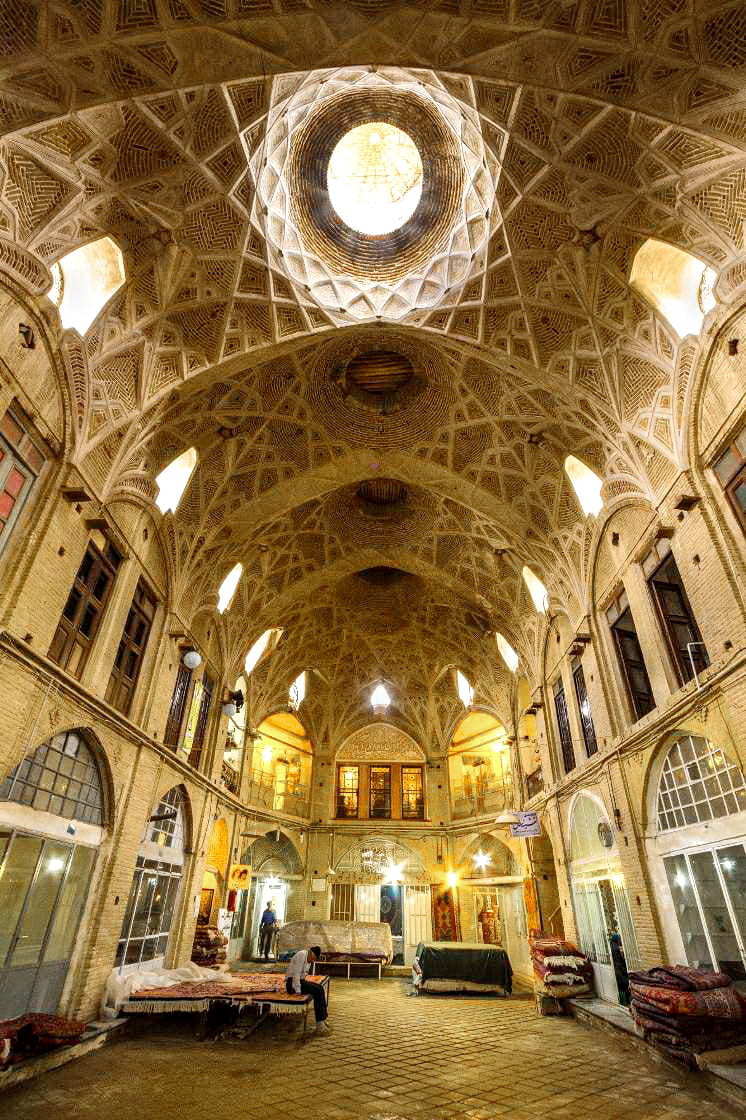Arak bazaar
The Bazaar of Arāk is ancient and located in the homonymous city (Markazi region). This is one of the first buildings built in it but the current bazaar complex includes: the hammam, the mosque, the madrasa, the water cisterns and the passages and the caravanserais were built at the time of Fathali Shāh Qājār in the year 1227 of the lunar Hegira in the central area of Soltān Ābād (ancient name of Arāk).
The plant of this bazaar has been designed previously and unlike the others it does not have a free and circular shape; all the paths of it are regular and have a particular geometric symmetry. The bazaar consists of two paths perpendicular to each other (cross-shaped), north-south and east-west, which break off into a widening, a place that is recognizable by a large stone basin.
The architecture of this bazaar is particular, so much so that the air in summer is cool and warm in winter. The main building materials are the brick and together with it the plaster of stucco and lime and of the clay was also used. In the sections of this bazaar wooden rods were used to fortify the building and lead and copper plates were used for the bases of the columns.
The ceiling of the bazaar is dome-shaped and these domes in the north-south and east-west stretches jump to the eye in sequence. In the midst of them there is one larger than the others which is placed at the intersection of the two paths or the chahār-suq (large space located at the intersection of two steps of a bazaar generally covered by a dome).
Right in the middle of each dome there is a skylight on many sides that gives light to the internal environment of the bazaar and also allows the exchange of air.
Along the axis of the bazaar are 500 shops and in addition to those are active small bazaars, workshops and other stores. On the two sides of the bazaar you can see timchehs (sort of deposits) at the distance of 50 meters from each other like the specific timcheh Kāshāni of the carpet bazaar and the timcheh Mehr which was dedicated to craftsmanship.
Most of the saras and timchehs are on two floors and sometimes in the past the traders and travelers who came here from distant cities to buy, spent the night on the second floor. In this traditional bazaar are sold all kinds of goods such as clothes, carpets, shoes, household items, groceries, handicrafts, copper and brass crockery etc.








